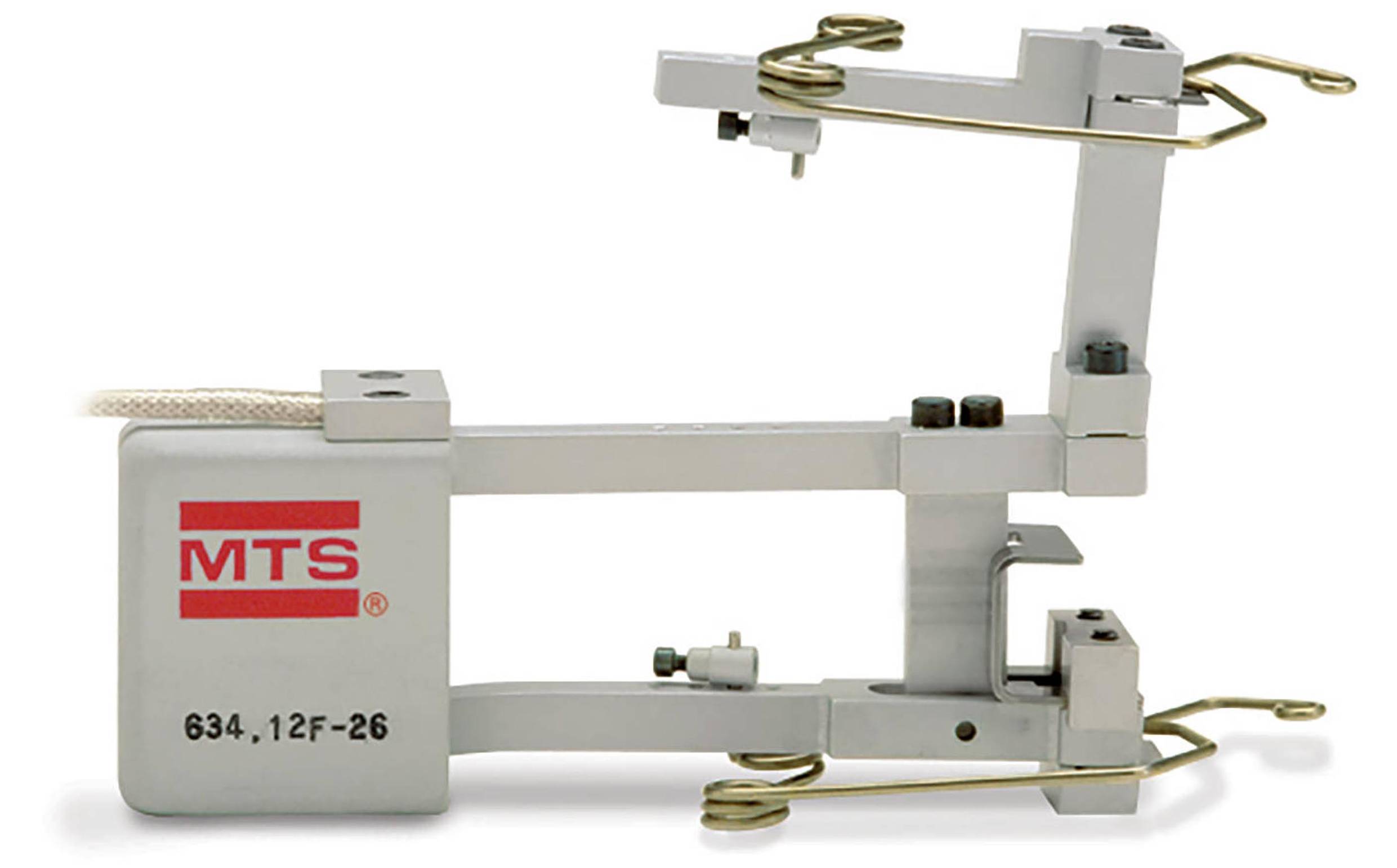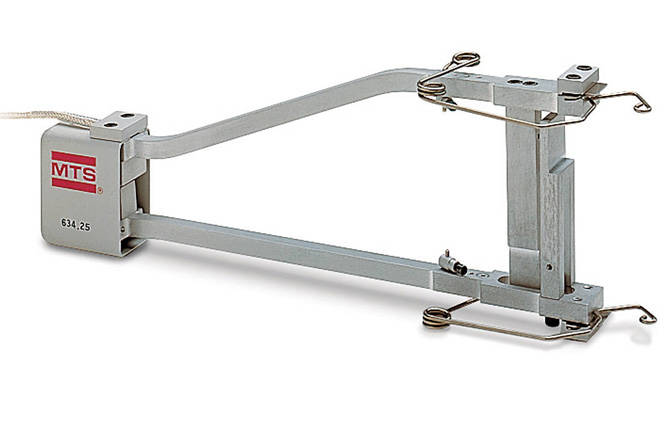
Extensometers are available in hundreds of models and multiple technologies, so selecting the correct one can be confusing. There are specialty extensometers for use in non-ambient temperature or immersible applications. There are laser and video extensometers for precision data collection. In this guide we will review what to consider when selecting an axial extensometer for room-temperature applications. Knowing the following specimen properties before starting a test will help you select the best extensometer.
IDENTIFY THE SPECIMEN’S GAGE LENGTH
Most material specimens have enlarged ends or shoulders for gripping and a gage section with a smaller cross-sectional area. Strain is usually measured over the middle 70-80% of the gage section to ensure that material deformation occurs along the length with a constant area cross section. Gage lengths for contact extensometers typically range 3mm (0.12 in) to 100 mm (~4 in), with longer gage lengths available for specific applications like rebar testing. Gage length extender kits can modify the gage length of an existing extensometer to perform strain measurements at longer or shorter gage lengths.
CONSIDER THE SPECIMEN’S CROSS-SECTIONAL AREA
Whether the specimen is round or flat determines which type of knife edges to use. Straight knife edges are standard on many extensometers and recommended for testing round specimens. Knife edges with 3-point specimen contact are often used when testing flat specimens. They include one single-point and one double-point contact knife edge. The 3-point specimen contact creates a plane, ensuring that your extensometer is in line with the axis of your test.
ESTIMATE HOW LONG YOUR SPECIMEN WILL TRAVEL
Measurement range is the maximum travel an extensometer can stretch and still achieve accurate results. Measurement range is indicated either by an absolute measurement of distance or a relative measurement of strain range compared to the gage length. For example, a 50 mm gage length extensometer will have a measurement range of ±10% or ±5 mm. Most premium contacting extensometers are designed with an over travel protection that allows the device to extend slightly longer than its rated measurement range without damaging the components.
TAKE SPECIMEN STRENGTH PROPERTIES INTO ACCOUNT
The specimen must be strong enough to support the weight of the extensometer. Most room temperature extensometers are attached to the specimen using springs, rubber bands, or quick attachment kits. Look for lightweight extensometers that can be secured close to the specimen. The weight and length of the extensometer create an overturning movement that must be reacted to by the bottom knife edge. The knife edge on the bottom will dig into the specimen and the knife edge on the top will pull away. This problem worsens as gage length decreases. Next, look for knife edges that are sharpened on both sides – with a symmetrical point in the middle of the knife edge. These knife edges will last longer and are less likely to chip than asymmetrical options. Inexpensive extensometers are often heavier and longer, and they are more likely to bend the specimen or slip off.
PREDICT HOW YOUR SPECIMEN WILL FAIL
If you plan to test through specimen failure, be sure that your extensometer is up to the task. Many extensometers can be left on the specimen through failure, but backlash from high energy breaks can damage the extensometer. Consider removing the extensometer before failure or using a non-contact extensometer if your specimen will break violently.
DETERMINE CALIBRATION REQUIREMENTS
Extensometers are classified based the maximum error of strain and/or displacement compared to a known standard. ISO 9513 gives a class number (0.2, 0.5, etc.) whereas ASTM E83 assigns a class letter (A, B1, B2, C, etc.). One primary difference between the ASTM and ISO standard is the fixed error allowed. For example, an ISO 9513 Class 0.5 calibrated extensometer may have a relative error of 0.5% displacement and a fixed error of ± 1.5μm and an ASTM E83 class B1 calibrated extensometer may have a relative error of 0.5% strain and a fixed error of 0.1 mm/mm. Refer to the ASTM and ISO standards for more details.
New composites being developed for high-temperature aerospace applications are very stiff, low-strain materials. The best available extensometer classification should be used for tests of these materials. Tensile testing of high-elongation polymers may be accomplished with a looser specification such as ASTM E83 Class C, where the relative error in percent strain is very small compared to the entire measurement range of the extensometer. Often the ASTM or ISO test procedure will define the desired extensometer class for testing.

